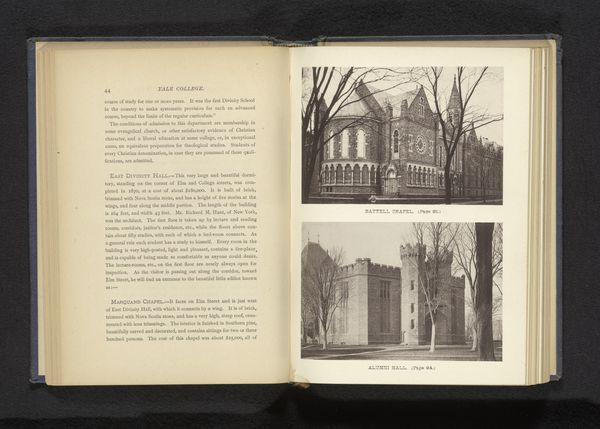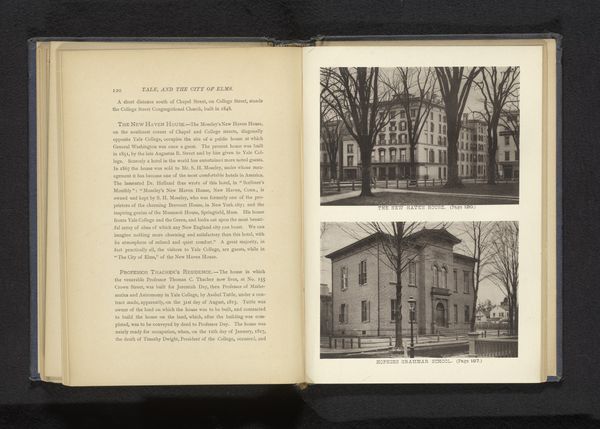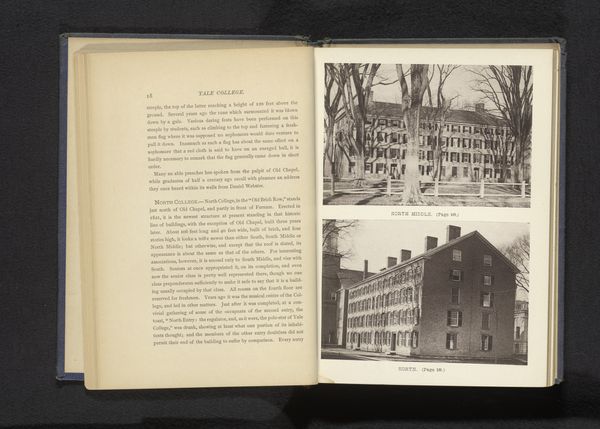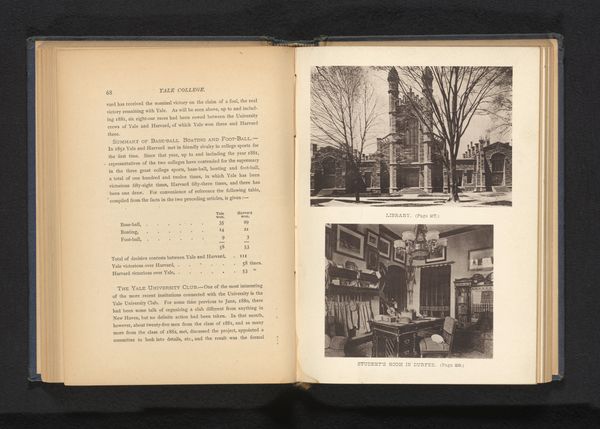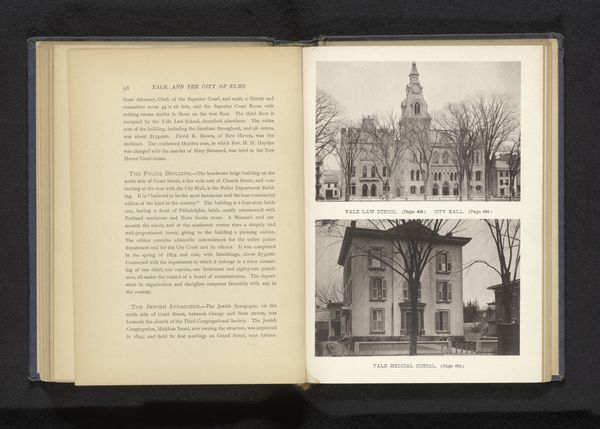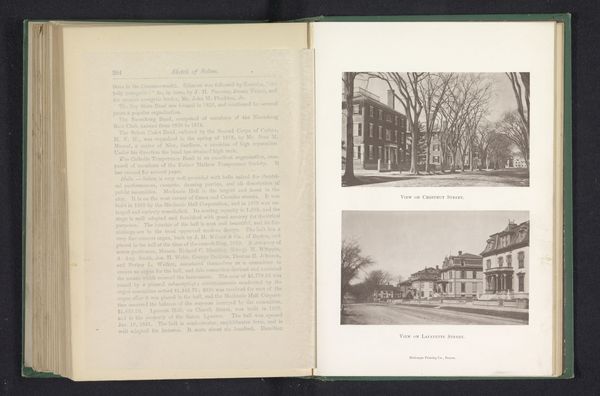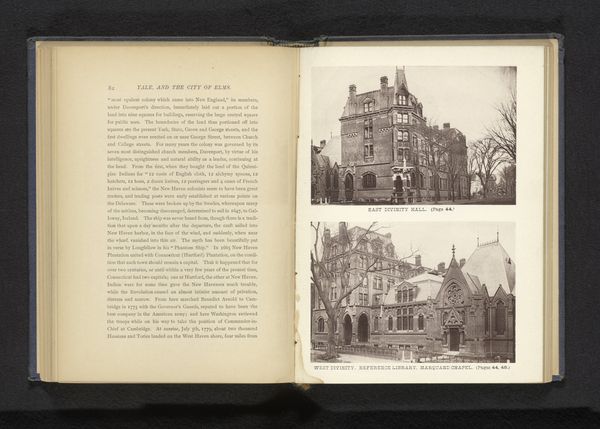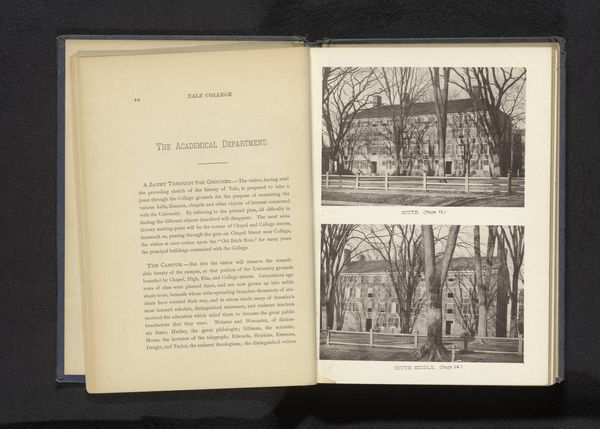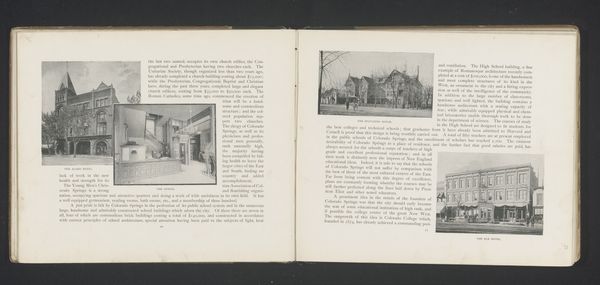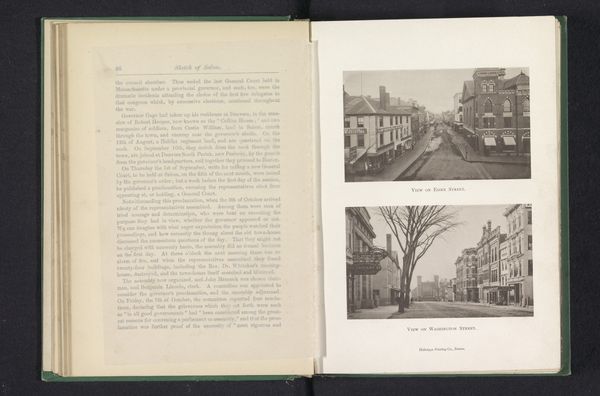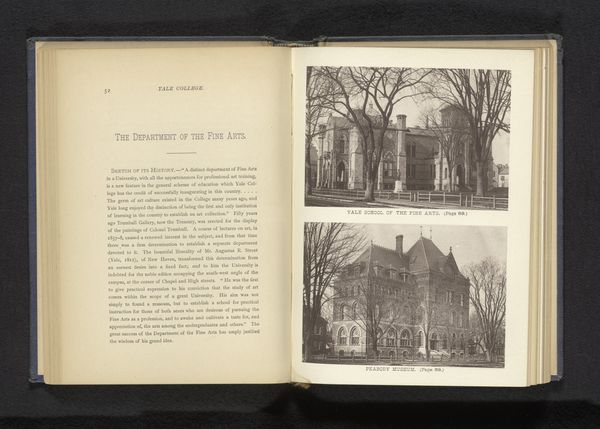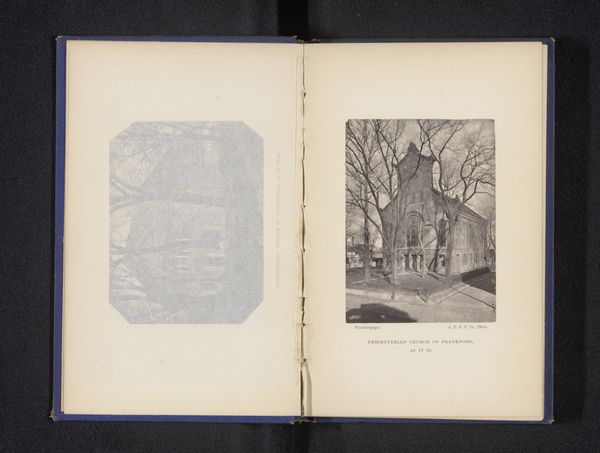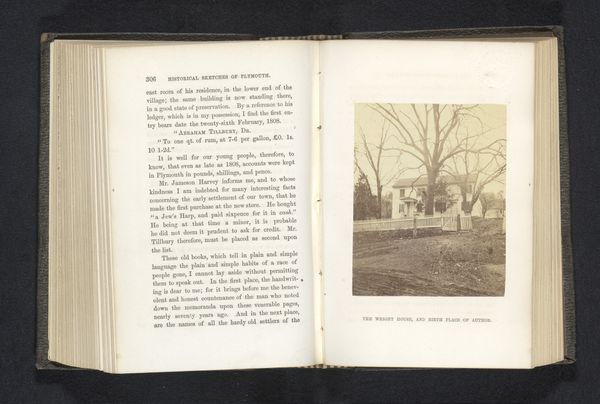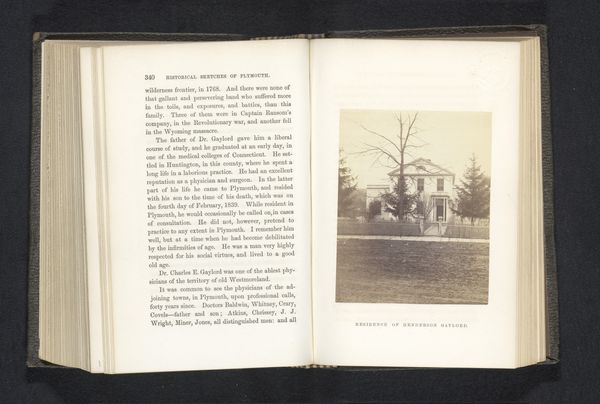![['Farnam Hall', 'Durfee Hall'] by James Notman](/_next/image?url=https%3A%2F%2Fd2w8kbdekdi1gv.cloudfront.net%2FeyJidWNrZXQiOiAiYXJ0ZXJhLWltYWdlcy1idWNrZXQiLCAia2V5IjogImFydHdvcmtzLzExYmExMWYxLTM4ZTgtNDYyMy1iOWExLTllNTgxNWMxM2ZmMS8xMWJhMTFmMS0zOGU4LTQ2MjMtYjlhMS05ZTU4MTVjMTNmZjFfZnVsbC5qcGciLCAiZWRpdHMiOiB7InJlc2l6ZSI6IHsid2lkdGgiOiAxOTIwLCAiaGVpZ2h0IjogMTkyMCwgImZpdCI6ICJpbnNpZGUifX19&w=3840&q=75)
print, photography, albumen-print
#
book binding
# print
#
photography
#
albumen-print
#
building
Dimensions: height 190 mm, width 136 mm
Copyright: Rijks Museum: Open Domain
Curator: Before us, we have a print showing Farnam Hall and Durfee Hall, two buildings that predate 1882, documented by James Notman. What strikes you first about this presentation? Editor: There’s an immediate contrast in visual weight. The architecture feels substantial, yet the muted tones and slightly blurred edges give it a dreamlike, almost ephemeral quality. It is simultaneously imposing and recessive. Curator: Right. Consider how Notman, as a commercial photographer, approached representing these halls of Yale College. He would have needed to think about production—the cost of albumen prints, the labor involved in developing and printing these images, the intended consumer who might purchase such a keepsake. Editor: And speaking of production, the symmetrical composition certainly speaks to the rational structure of both buildings. The eye is immediately drawn to the repetition of windows and the clear articulation of the facades. The architectural forms are allowed to speak for themselves. Curator: The use of albumen also draws out the minute details of the stonework and bricklaying. One cannot forget that the buildings themselves were erected by an underclass of laborers. The stones came from somewhere. Editor: But does bringing in that fact substantially alter the experience of seeing it? The material reality does not dictate how the viewer relates to the careful arrangement of forms, light, and shadow that Notman captured, the strong vertical emphasis of the bare trees mirroring the Hall's gothic revival style. Curator: The availability of such a print says a lot about consumption and class—who could afford it, what did it mean to have a visual representation of elite education on one's wall, what are the building materials themselves made out of and by whom were they created? The buildings appear as a commodity, stripped of any sign of the exploitation that funded their creation. Editor: Fair points, though perhaps viewing the piece for the balance of dark and light also reveals important aesthetic decisions made to communicate the stature of the university, regardless of societal matters. Curator: Perhaps by investigating what we deem worthy of immortalization, in either form or subject, we can gain clarity on society's underlying processes and goals. Editor: Precisely, to consider both form and fabrication ultimately lets us appreciate the image and its social presence more fully.
Comments
No comments
Be the first to comment and join the conversation on the ultimate creative platform.
